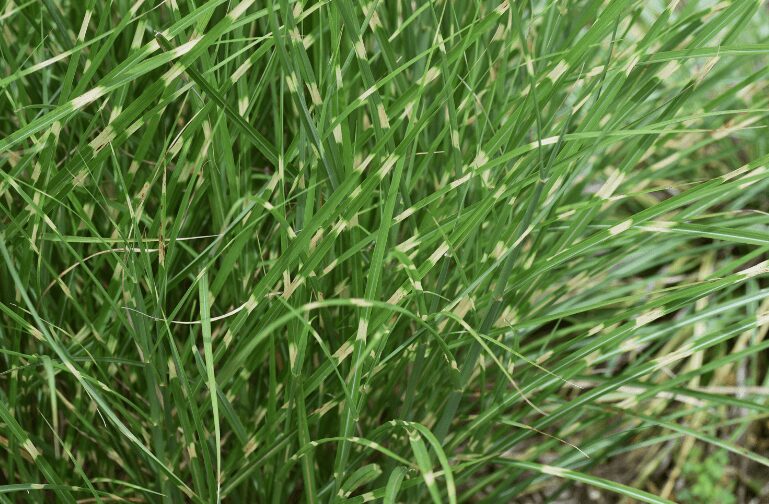When To Plant Zebra Grass

Zebra grass (Miscanthus Sinensis “Zebrinus”) is unusual with narrow, horizontal bands of yellow up and down the one-half to three-quarter inch wide leaves. The leaves arch outward in broad, spreading clumps.
This grass ranges from 5 to 7 feet tall. The pinkish flowers bloom in September and reach from 1 to 2 feet above the foliage.
Zebra grass makes a striking accent plant in the garden. After the first frost, the foliage turns brown, adding fall color to the landscape. This grass prefers to grow in full sun.
Little Zebra grass (Miscanthus Sinensis “Little Zebra”) also has horizontal bands of yellow up and down the leaves, but it only reaches 3 to 4 feet high with a spread of 2 to 3 feet allowing it to fit into a smaller garden.
The flower is reddish-purple, fading to a creamy tan. It blooms in August. “Little Zebra” prefers to grow in the full sun.
Porcupine grass (Miscanthus Sinensis “Strictus”) also has narrow, horizontal bands of yellow up and down the leaves like zebra grass. The leaves of the porcupine grass, which are three-eighths of an inch to a half-inch wide, are narrower than zebra grass.
The leaves are also stiff and upright, making them look like porcupine quills. The habit of this grass is tight and erect, with a height of 5 to 6 feet.
The copper-colored flowers appear in September and reach 1 to 2 feet above the foliage. Porcupine grass prefers full sun and well-drained soil.
How to Plant Zebra Grass
Before planting zebra grass, you need to know what kind of soil it needs. While the plant thrives in moist soil, it will not do well in poor conditions.
Make sure the pH level of your soil is neutral. Mulch the ground well with organic material such as leaves and straw.
In the fall, you can cut the stalks completely, but make sure not to disturb the roots. In the spring, you can trim them again.
The best time to plant zebra grass is early fall or early spring. Plant it in the early spring, before temperatures rise.
The plant’s rhizomes, which form the basis of its root system, endure their first dormant season and sprout new leaf blades the following year.
Planting zebra grass too late in the fall or winter will result in its dormant state, but you can still get a late winter interest from it.
In the spring, fertilize the plant lightly. A second application will be necessary if the plants start to grow slowly or if the foliage turns yellow or weak.
Use a general-purpose garden fertilizer, not a lawn fertilizer, as it can be too strong for zebra grass. In winter, the foliage of zebra grass will add interest to your landscape. It will also grow well as a hedge.
When it is mature, zebra grass can reach seven feet in height and five feet in diameter. Planting it in a moist, well-drained location is the best way to ensure it looks good.
Its slender, shiny green leaves feature yellow horizontal bands. Zebra grass also produces brownish golden foliage in the fall.
It is easy to grow, which makes it a great choice for first-time gardeners.
Zebra Grass Maintenance
Most pests and diseases do not affect zebra grass plants. They may receive foliar rusts or tiny leaf damage from chewing insects, but the plant is generally quite sturdy and hardy.
For optimal growth, provide full sun and lots of water. The plants thrive in pots but require more water than those on the garden bed.
In the spring, fertilize with excellent organic plant food. In the fall or spring, prune the inflorescences. Leave the dried feathery blossoms till April if you like the sight of them.
If not, clip them back to within a few inches (8 cm.) of the plant’s crown in the fall. Remove any damaged foliage as soon as it appears.
If the plant is in too much shade, the leaf blades may become floppy, but you can assist keep them upright with a stake.






















